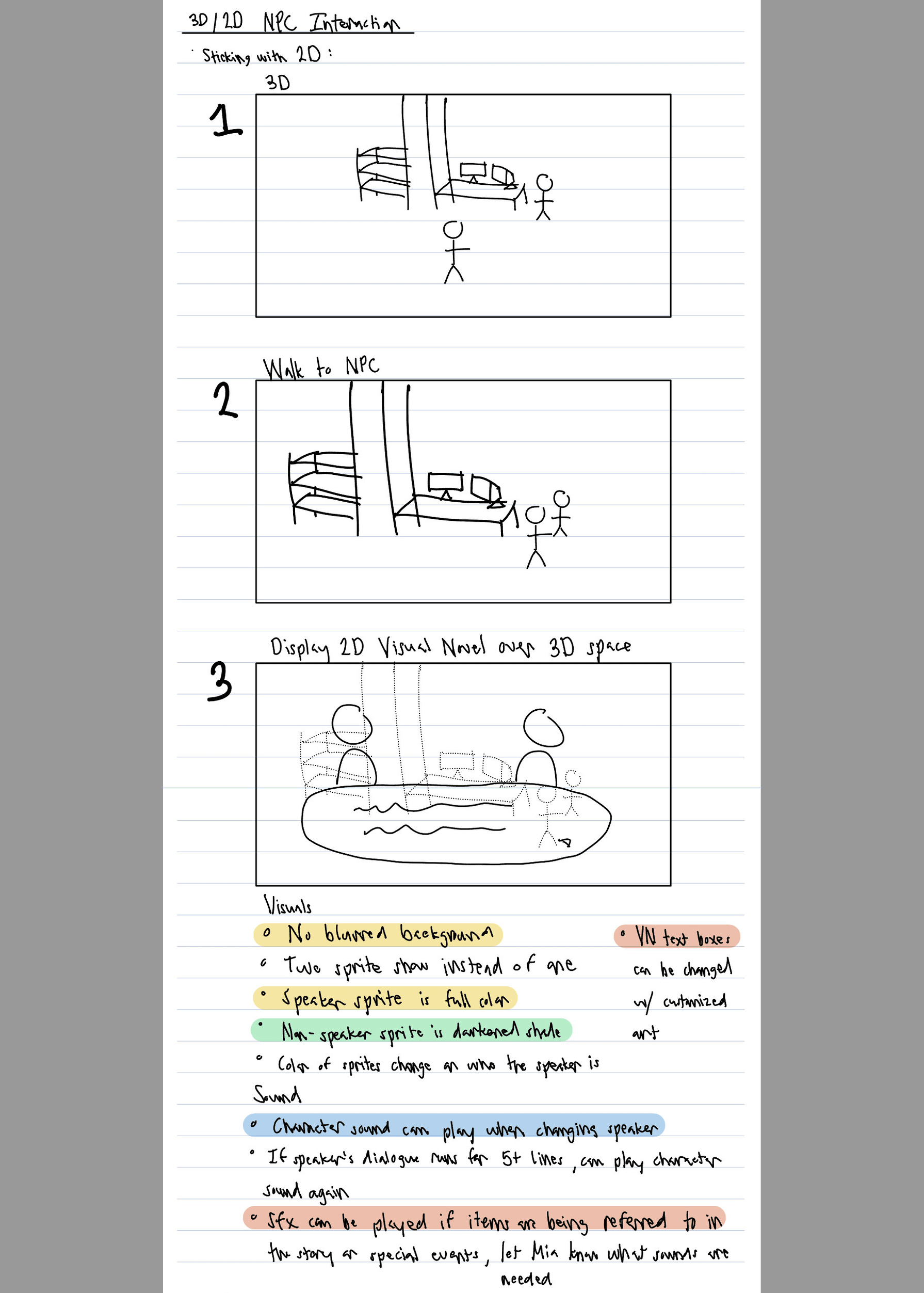Evaluating our project's progress
User Interviews
After aligning our goals and starting to create new builds, we wanted to understand our product's progress towards meeting our goals. I created questions to gather qualitative data through user interviews. This helped us gauge how far we are from reaching our defined goals. With recruiting online and in-person on the UC Santa Cruz campus, we were able to work with 5 participants.
Quotes:
• "I started associating feelings of hesitancy whenever I saw that character because I would only see my own player with a bit of stress whenever they were around."
• "He comes off as weirdly friendly and chill but then as soon as you get to work, he’s demanding all things that you’re supposed to be responsible for but he didn’t communicate with you well."
• "It becomes more apparent when they’re talking to someone that doesn’t make them anxious, so that’s why when I was playing, the first thing I wanted to do was talk to the other— the character that was nice to me, because it made my character, my player character also not seem like scared or anything..."



































